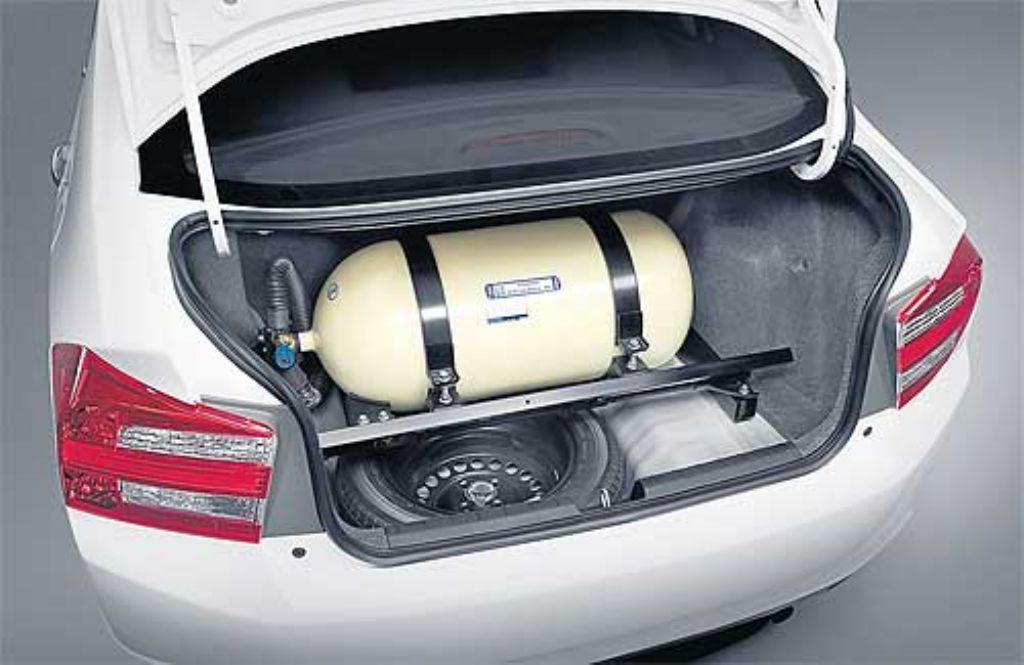The rising costs of petrol and diesel have led many vehicle owners to consider cleaner and more affordable alternative fuel options such as compressed natural gas (CNG) and liquefied petroleum gas (LPG). CNG and LPG have emerged as popular alternatives in recent years due to their lower costs and reduced emissions compared to conventional fuels.
What is CNG?
Compressed natural gas or CNG is natural gas (which is mainly composed of methane found beneath the earth’s surface) that is compressed to less than 1% of its volume at standard atmospheric pressure and stored in high-pressure cylinders. This allows it to be transported and utilized more conveniently. CNG produces 25-30% less carbon emissions than an equivalent amount of diesel or petrol when combusted in a vehicle. It is also non-toxic, odorless and colorless. Additionally, it has a higher octane rating than petrol, providing more power with fewer emissions during combustion. Most CNG available in India is extracted through domestic fields and reserves ensuring energy security.
Benefits of Powering Vehicles with CNG
The primary benefits of opting for a CNG vehicle include significant cost savings on fuel, reduced air pollution and minimal maintenance. CNG costs about 20-30% less than an equivalent liter of petrol or diesel. Hence, CNG vehicles prove economical in the long run with lower running costs. Emissions of particulate matter and carbon monoxide are considerably lower from CNG engines compared to conventional vehicles. This makes them more eco-friendly and reduces health hazards from vehicle pollution. CNG engines also have fewer moving parts and require minimal oil changes and tune-ups throughout their lifecycle. This translates to lower maintenance and repair expenses compared to petrol or diesel vehicles.
What is LPG?
LPG or liquefied petroleum gas refers to propane or butane extracted from petroleum or natural gas fields that is stored under pressure in liquid form in fuel tanks. It has a higher energy density than CNG, increasing the driving range of vehicles. LPG produces 20-30% lower carbon emissions than petrol and is cheaper per kilometer at current prices. It is also easily disponible across the country through the extensive LPG cylinder distribution network. Retrofitting existing petrol vehicles with an LPG kit provides dual-fuel capability, giving users flexibility of fuel choice.
Key Upsides of Using LPG for Transportation
Opting for an LPG vehicle saves thousands annually on fuel costs compared to a conventional petrol or diesel counterpart. It is now one of the most affordable automotive fuel alternatives available in India. LPG produces significantly lower levels of harmful pollutants like particulate matter, carbon monoxide, and hydrocarbon emissions during combustion. This dramatically improves air quality over traditional fuels. LPG vehicles are also taxed lower than petrol or diesel vehicles in many states, providing extra savings to owners. Periodic maintenance is simpler for an LPG engine fitted vehicle compared to CNG ones as the tank remains outside the vehicle.
Infrastructure Development for CNG and LPG vehicles
The Indian government is actively promoting the use of natural gas in automobiles through schemes like the Pradhan Mantri Urja Ganga project. This massive pipeline project is expanding city gas distribution networks and increasing the number of CNG and LPG Vehicles stations across the country. There are currently over 2,800 CNG stations in India with plans to raise this to 10,000 outlets over the next few years. States like Delhi have led the way in creating robust CNG refueling infrastructure. Similarly for LPG, the widespread LPG cylinder network across cities and towns provides easy availability and accessibility to users. Major public and private sector oil marketing companies are investing heavily to develop gas infrastructure. This is critical to drive higher adoption of these environment-friendly fuels for mobility needs.
Challenges in Switching to CNG and LPG Vehicles
Despite the financial and environmental benefits offered, limited refueling infrastructure in some areas and high initial conversion costs remain impediments for many vehicle owners considering the switch. Storage cylinders also reduce cargo space in goods carriers. CNG requires higher maintenance due to moving engine parts compared to LPG. However, these challenges are being steadily addressed through infrastructure investments and improving technology. Industry stakeholders are also working on reducing upfront costs to encourage more people to shift to these cleaner fuels. With declining battery costs and a growing nationwide charging network, electric vehicles also emerge as a promising zero-emission alternative worth considering in the future.
Get more insights on CNG and LPG Vehicles

